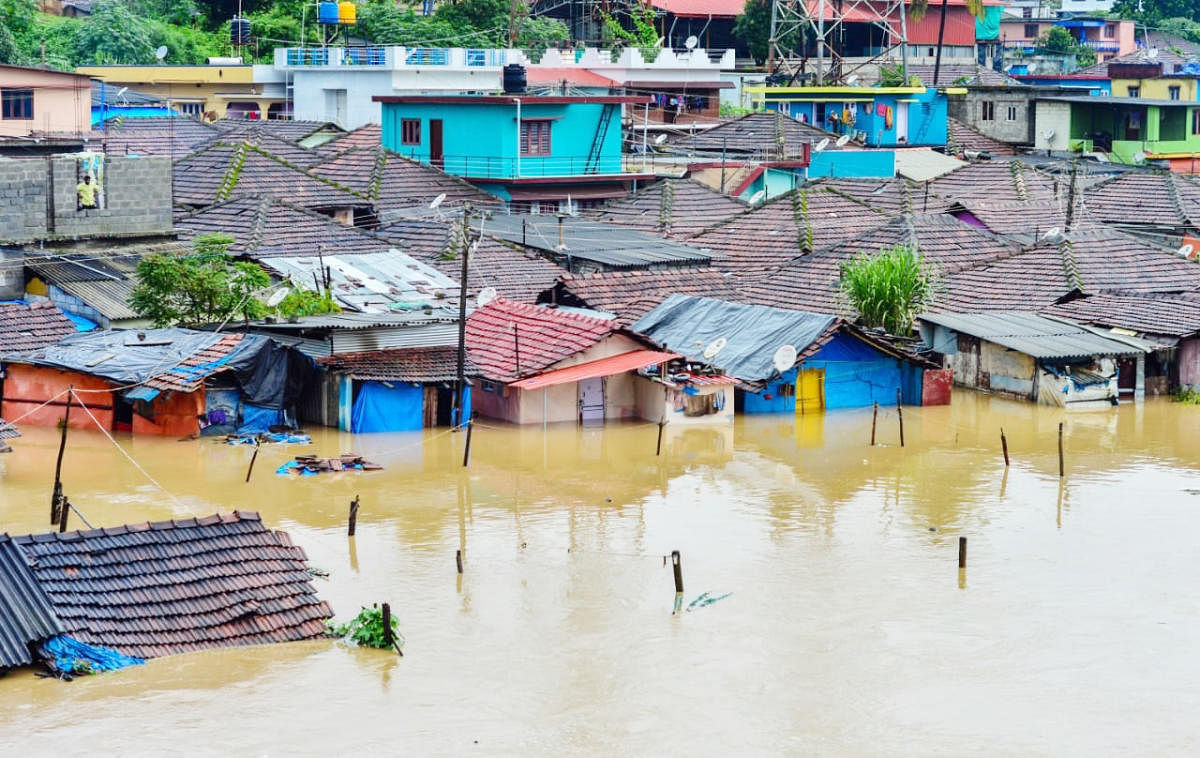
As we see disasters unfolding around us frequently, we witness one common phenomenon that stands out through it all -- our profound stupidity. We have become the cause of these disasters, yet we never ever seem to learn our lessons. We continue with our greedy ways. Such is the evolution of our social and political wisdom after decades of so-called growth and development built on modern education. Individual thinking, community knowledge, humility, sincerity have all become second fiddle to the celebrated modern education which has lost its moral core.
What unfolded in Kodagu between two devastations in the span of a year -- between mid-August 2018 and 2019 -- is testimony to this. This time around, the spread of the disaster is wider, with swollen rivers marooning vast patches of productive land and habitations, coupled with landslides. Lives are lost, properties destroyed, cultivations erased, and roads have disappeared. The threat of nature’s fury hasn’t passed yet. The district administration’s preliminary estimate of loss pegs it at Rs 700 crore, less than a quarter of the losses last year. These estimates, however, haven’t factored in social, psychological, educational, health and livelihood costs.
It is rather a deliberately cultivated tendency of the executive to ignore the past and focus on the present without taking into account what went right and what could have been done better. Though it is understandable that the present is critical, the past must hold a light to the future process. Thus, it will be worthwhile to educate ourselves by taking a step back and analyse what unfolded between these two devastations in one year, note the deficiencies in the process and apply correctives.
The district administration was much appreciated for its rescue operations last year. But there ended all sincere effort. The following phases, relief and rehabilitation, became pictures of contrast. The local media presented the glimpses of this phenomenon during the relief phase: on how the relief materials were distributed to all and sundry without any accountability; how there was neither an account of what relief materials came in, which was evidently enormous as people from across the state chipped in, or about the beneficiaries. It was also clear that politics prevailed in the relief phase. For politicians, there is no shame in their graceless giving of ‘gifts’ donated by other people; there is no shame in practicing discrimination in humanitarian work. When politics penetrates even the temporary relief shelters set up for disaster victims, all we can do is pray for better sense to prevail.
The never-ending rehabilitation phase in Kodagu is on the same path of unaccountability. There still is no rehabilitation plan for the 2018 disaster in the public domain. The absence of a time-bound plan perfectly suits the executive. Even after a year, neither district officers nor elected representatives are accountable for anything. The silence of elected representatives from the district is deafening. The grand Kodagu Reconstruction, Rehabilitation and Development Authority remains on paper, showcasing the impracticality of a centralized top-heavy entity. But there was no dearth of optics for the gallery or directions from air-conditioned rooms. The management of this phase has become an ad hoc business, sans a plan.
The rehabilitation phase is reduced to building roads and houses and doling out some money to victims. Socio-psycho-livelihood needs, which are critical, appear nowhere in the government’s scheme of things. Victims are left to fend for themselves for their daily bread. Damaged roads stand half-attended. Cluster houses, which are suited to the plains, are being built in these hills. There are question marks even on the quality of these houses, too, which have started leaking already. Not even one disaster-affected family has occupied one of these new houses despite promises and assurances galore by the people’s representatives and officers. The business of construction of all 800-plus houses at different locations have been given to one entity. There are grievances galore about compensation. Take a look at the list put out by the administration, and you will find compensation amounts like Rs 1,904 or Rs 2,176, which makes one wonder how such accurate figures to the unit place were arrived at.
The prime example of how this phase is unfolding is right in the heart of Kodagu’s capital, Madikeri town. The landslide that consumed the old bus stand still stands naked after a year, like an iconic natural monument. It was only when the media brought to public notice the imminent danger that the local administration revealed, 10 months after the disaster, that they are working on a plan to build a monument at the place. Some well-meaning people provided a detailed technical plan with the help of experts for Rs 1 crore. The administration ignored it and embarked on a plan that costs thrice as much. Even that work has stopped at the base, and soil slips have been recorded frequently by the media.
The entire gamut of problems in the process is due to the absence of two basic requirements -- expertise and a plan. Evolving a participatory pre- and post-disaster management plan and taking a multidisciplinary approach based on scientific inputs on the causes and remedies are complex tasks. The district administration is trained to handle revenue matters, not to evolve a technical plan, let alone implement it. The acknowledged good performance during the rescue phase was a result of expertise available to it in the form of the National Disaster Relief Force and other agencies. An anchor with expertise and powers to coordinate all disciplines and phases in the district is a basic requirement. The key to manage this scenario is a time-bound, decentralized plan. Defining the role of local bodies and holding them accountable is essential. But, of course, all of this will come a cropper without sincerity. And, most importantly, keep the politics out.